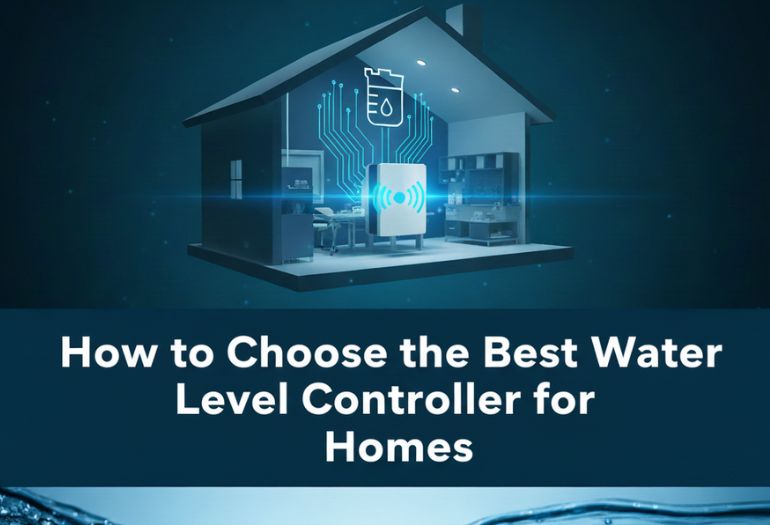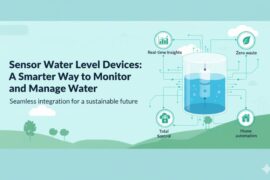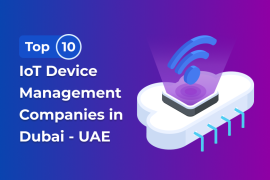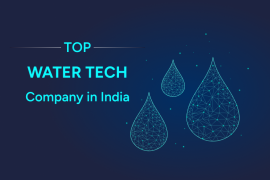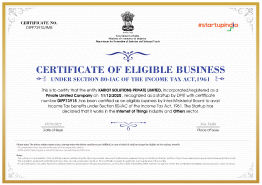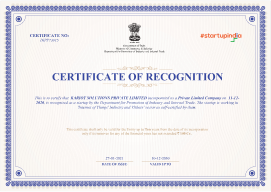Managing water efficiently has become a priority in today’s world, where sustainability and convenience go hand in hand. Every household relies on a consistent water supply, and manually controlling the motor or checking the tank every day can be exhausting. This is where a water level controller makes life easier. It automatically manages your tank levels, ensuring that you never face overflow or dry running issues.
With advancements in home automation, modern controllers go beyond just switching motors on and off. They now integrate with smart systems, enabling smart water management using IoT for complete control and monitoring. In this comprehensive guide, we’ll help you understand how these controllers work, what features to look for, and how to select the best one for your home.
What Is a Water Level Controller?
A water level controller is an electronic system that monitors the level of water in a storage tank. It automatically switches the motor on when the tank is low and turns it off once it’s full. This automation saves water, reduces energy consumption, and protects your motor from damage caused by dry runs.
Modern systems are equipped with intelligent sensors that detect water levels and send signals to the control unit. The controller then manages the motor operation accordingly, making it a reliable and user-friendly solution for every home. With IoT integration, these systems now offer smarter features like remote control and real-time alerts.
Why Every Home Needs a Smart Water Management System
Today’s homes are becoming increasingly connected. From lighting and security to energy monitoring, smart systems are simplifying life and improving efficiency. Water management is no exception. Smart water management focuses on using technology to monitor, control, and optimize water usage in homes. By integrating IoT (Internet of Things) technologies, homeowners can now manage their entire water system remotely.
Imagine getting real-time updates on your tank level, being notified when your pump turns on or off, and even receiving alerts when there’s an issue all on your phone. This is the convenience that smart systems offer. By combining automation with connectivity, smart water solutions are redefining how homeowners interact with their resources.
These systems go beyond simple automation. They provide insights into your daily water usage and highlight patterns that can help you make better decisions. When used effectively, they can reduce wastage, lower bills, and promote sustainable water consumption habits.
The Working Principle of a Water Level Controller
To understand how it operates, let’s take a closer look at the process:
- Sensors Detection – Sensors are placed at different levels inside the tank (low, medium, full).
- Signal Transmission – The sensors send electrical signals to the control unit when water levels change.
- Motor Activation – The control unit switches the motor on when water is low and turns it off once the tank reaches full capacity.
- Automation and Safety – Some advanced systems include dry-run protection and delay timers to prevent short cycling.
The addition of IoT remote monitoring solution capabilities now allows users to track water levels, pump status, and consumption data directly from their mobile devices.
Exploring Different Types of Water Level Controllers
There are various types of controllers available, each suited to different home setups. Understanding them helps you choose the best match for your needs.
1. Manual Controllers
These provide indication lights or alarms but still require manual operation of the pump. They’re simple but lack full automation.
2. Semi-Automatic Controllers
These allow partial automation starting the motor manually while stopping it automatically when the tank is full.
3. Automatic Water Controllers
These fully automate both pump activation and cut-off, ensuring zero overflow and complete convenience.
4. Wireless Controllers
Wireless models eliminate long wiring by connecting through RF or Wi-Fi signals. They are perfect for buildings with multiple tanks or where wiring is complex.
5. IoT-Based Controllers
Integrated with sensors and IoT tank level monitoring systems, these controllers provide remote access and real-time water data, making them ideal for modern smart homes.
IoT Integration in Water Level Controllers
The introduction of IoT remote monitoring solutions has transformed traditional water controllers into smart devices. With IoT technology, these systems connect to a mobile application or web dashboard, providing real-time data about tank levels, pump operation, and overall water consumption.
An IoT gateway acts as the communication hub between sensors, the controller, and cloud platforms. This setup enables continuous updates, remote control, and fault alerts, making water management seamless. You can monitor your system from anywhere, ensuring that your home remains efficient even when you are away.
Additionally, IoT tank level monitoring allows proactive management. For instance, if the system detects irregular water usage or potential leaks, it can notify you immediately. Such intelligence ensures minimal wastage, prevents motor damage, and extends the lifespan of your equipment.
Benefits of Choosing an Automatic System
Selecting an automatic level controller adds immense value to your home. It not only saves time but also integrates seamlessly with digital home automation systems.
Here’s why it’s worth considering:
- Hands-Free Operation: It eliminates the need for manual control.
- Consistent Supply: Always ensures sufficient water availability.
- Data Insights: When combined with IoT device management, it can offer data on water usage trends.
- Safety Features: Includes overload protection and motor delay functions.
- Eco-Friendly: Promotes responsible water consumption.
Features to Look for When Buying a Water Level Controller
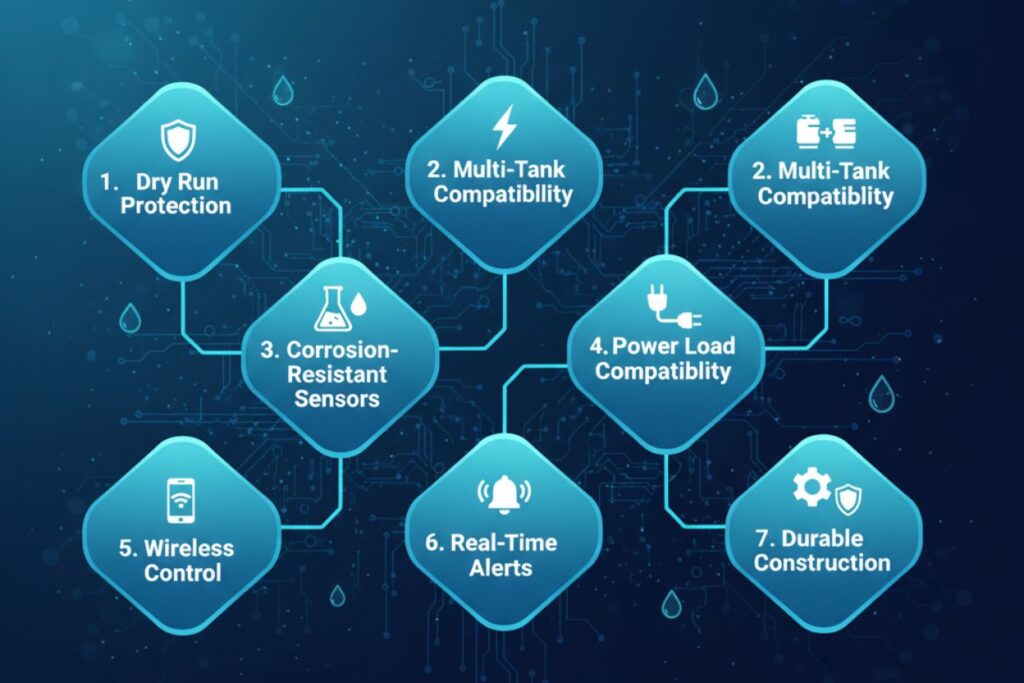
When selecting a water level controller, pay attention to the following features to ensure performance and reliability:
1. Dry Run Protection
This feature stops the motor when the source tank is empty, preventing overheating or damage.
2. Multi-Tank Compatibility
If your home uses both overhead and underground tanks, select a model that can manage both.
3. Corrosion-Resistant Sensors
High-quality sensors ensure accurate readings even in hard water conditions.
4. Power Load Compatibility
Check if the controller matches your motor type single-phase or three-phase.
5. Wireless Control
Some models support integration with smart water meters, helping monitor consumption and efficiency.
6. Real-Time Alerts
IoT-enabled models send alerts for low water, overflow, or motor faults.
7. Durable Construction
Weatherproof and insulated designs improve safety and lifespan.
How IoT Makes Water Management Smarter
With the rise of smart homes, IoT-based automation has become central to water management. Using sensors, connectivity modules, and data analysis, systems now ensure optimized water distribution and smarter usage patterns.
Through smart water management, data is continuously collected and processed, giving homeowners complete control over their water systems. The technology works through a central IoT gateway, which connects sensors to a cloud-based platform, enabling real-time control and monitoring.
This innovation ensures precision, reduces water waste, and helps homeowners identify unusual patterns in usage before they turn into costly issues.
How Automation Enhances Water Management
Automation is the heart of modern water systems. An automatic controller provides uninterrupted water supply while ensuring efficiency. It eliminates the risk of human error, prevents wastage, and safeguards your motor. By combining automation with remote monitoring, homeowners can maintain full control without physically checking tanks or switching pumps manually.
Over time, automation contributes to sustainable water use, reduced electricity bills, and improved reliability for your household’s water infrastructure.
How IoT Makes Water Management Smarter
Smart water management using IoT collects and analyzes data on water consumption patterns, helping identify unusual trends or leaks before they escalate into problems. Through IoT device management, homeowners can monitor and control multiple systems from a central hub, reducing maintenance efforts and optimizing water usage.
With predictive insights, homes can reduce wastage, improve efficiency, and adopt a more sustainable approach to water consumption.
Advantages of IoT-Integrated Systems
Integrating a water level controller with IoT technology brings several long-term advantages:
- Remote Control: Manage your water levels from anywhere through your smartphone or computer.
- Real-Time Data: Continuous internet of things monitoring provides insights into tank capacity and usage trends.
- Smart Alerts: Get instant notifications when the tank is full, low, or when the motor requires attention.
- Predictive Maintenance: Using IoT device monitoring, systems can predict faults and suggest preventive maintenance.
- Sustainability: Smarter systems promote water conservation and energy efficiency.
These features not only simplify your life but also make your home more eco-friendly and future-ready.
Installation Guidelines for Water Level Controllers
Although professional installation is recommended, understanding the process helps ensure safety and accuracy.
- Sensor Placement:
Mount sensors at precise water levels (bottom for low, top for full). - Proper Wiring:
Use insulated cables, especially for outdoor tanks. - Controller Location:
Install the control box near the motor switchboard in a dry area. - Testing:
After installation, test a full cycle allow the tank to fill and empty to confirm that the system operates properly.
When integrated with IoT monitoring, the system setup includes configuring the controller with the mobile or cloud platform for seamless connectivity.
Maintenance Tips for Long-Lasting Performance
Maintenance plays a key role in ensuring smooth operation:
- Clean Sensors Regularly: Dirt and mineral deposits can interfere with accuracy.
- Inspect Wires: Replace damaged or corroded wires immediately.
- Check Indicators: Ensure that LED or display indicators are functioning correctly.
- Keep the Unit Dry: Moisture may damage electrical components.
Performing these simple checks periodically ensures reliable operation for years.
Troubleshooting Common Issues
If your water level controller isn’t functioning correctly, here are a few quick checks:
- Motor Doesn’t Start: Verify power connection and sensor wiring.
- Motor Doesn’t Stop: Clean the sensors and check for stuck floats.
- No Response: Restart the controller and recheck configuration.
- False Indications: Reposition the sensors away from direct water inflow.
For IoT-connected models, ensure your IoT gateway is active and your internet connection is stable.
How IoT Changes the Future of Water Management
The combination of automation and IoT has redefined the way we handle water at home. Through IoT device management and connected platforms, homeowners can achieve a higher level of control than ever before.
Real-time monitoring, predictive maintenance, and intelligent data analysis make water systems efficient and self-regulating. By integrating smart water management, homes can reduce waste, lower costs, and adopt a sustainable approach to daily living.
As technology advances, we can expect even more integration between smart controllers, IoT tank level monitoring, and environmental sensors for optimized performance.
Environmental and Economic Benefits
Installing a water level controller is more than a convenience, it’s a step toward sustainable living. Here’s how it benefits both your home and the planet:
- Reduces Wastage: No more overflow or leakage-related losses.
- Conserves Energy: Motors run only when needed.
- Supports Sustainability: Encourages responsible resource management.
- Lowers Bills: Controlled motor operation and reduced wastage lead to lower utility costs.
Incorporating smart water management using IoT ensures that every household contributes to a sustainable and technologically advanced future.
Conclusion
Choosing the best water level controller for your home is a practical decision that brings together convenience, efficiency, and sustainability. Modern systems go far beyond basic automation, offering smart monitoring, real-time control, and intelligent alerts that make managing water effortless. With a single system in place, you can maintain consistent water levels, protect your pump, and eliminate the stress of manual supervision.
For homeowners, this isn’t just about technology; it’s about making daily life easier while saving valuable resources. Investing in a reliable controller ensures that your home runs smoothly, water is used responsibly, and energy isn’t wasted. By embracing home automation in water management and intelligent monitoring, you create a household that’s more efficient, environmentally conscious, and ready for the future.

